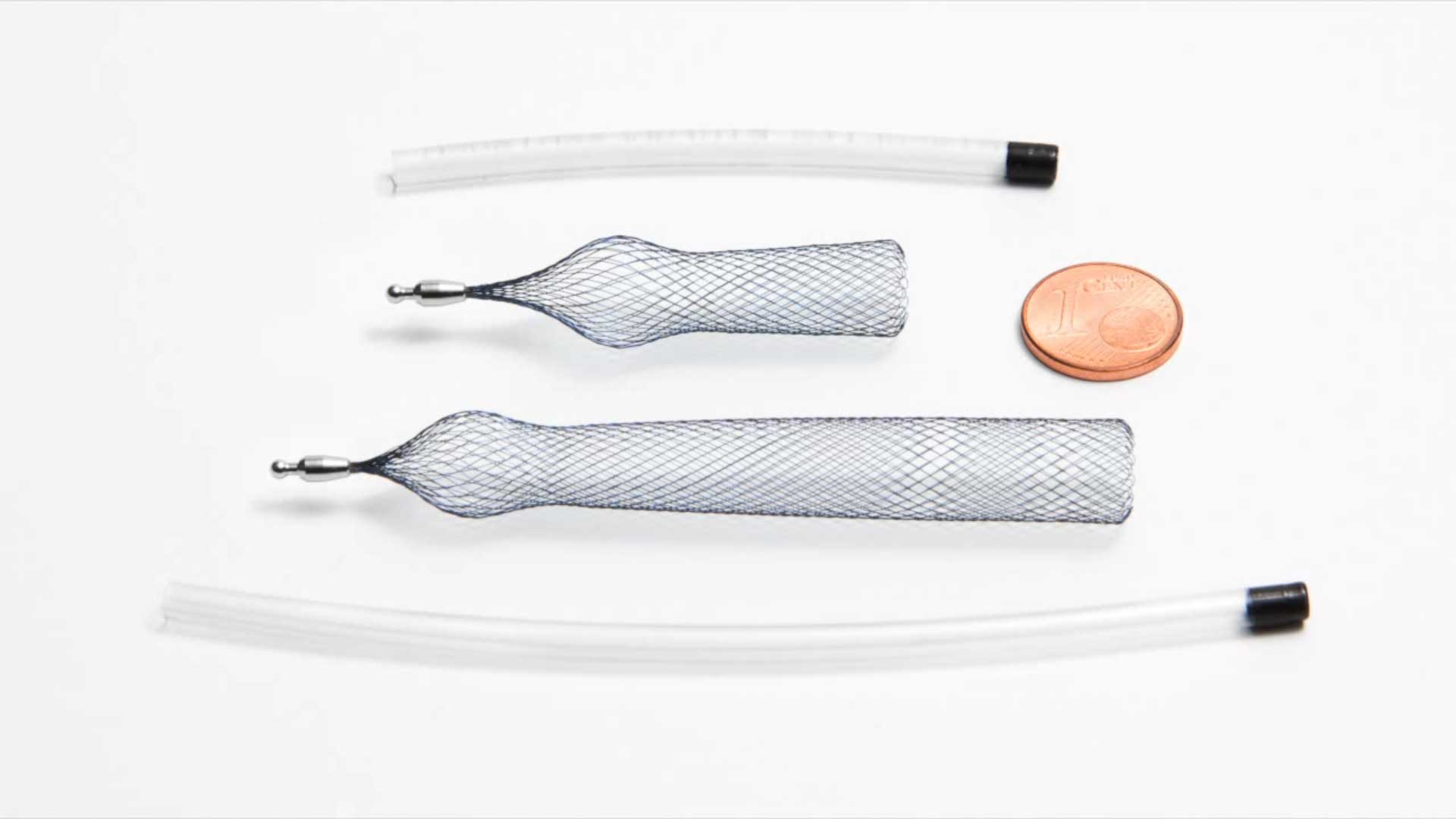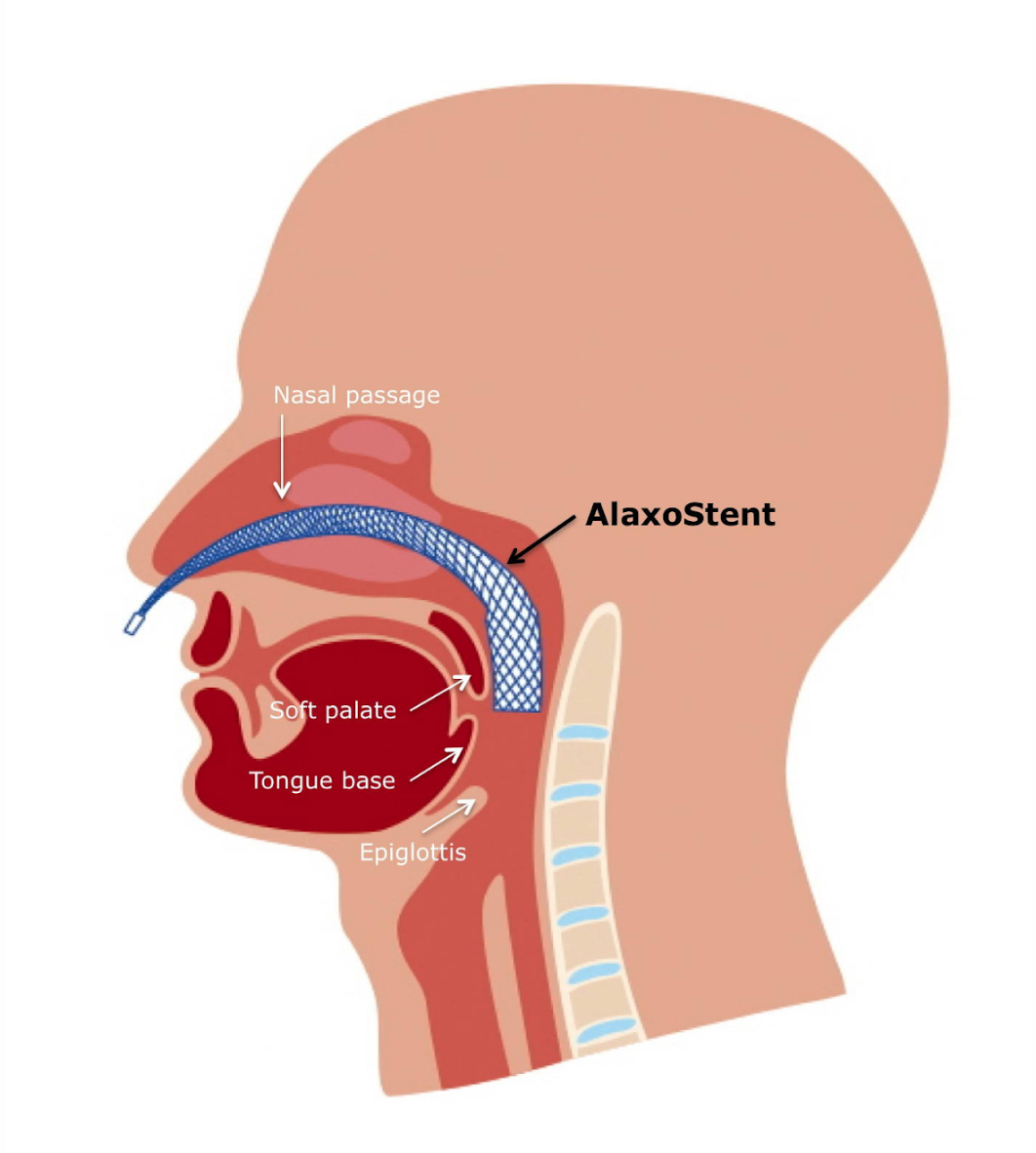How It Works
What are Airway Stents and how do they work?
Nasal Airway Stents
There are two different product lengths which splint either the anterior nasal cavity only [2”] or the full length nasal passage [3”].
The airway nasal stents are medical devices indicated for the improvement of nasal breathing. A common cause of decreased nasal breathing is having enlarged turbinates or “turbinate hypertrophy”. Our nasal stents work to mechanically push the turbinate aside to allow for better airflow.
Design
The stent braid is made from shape memory metal nitinol and has a ball-shaped widening that gets positioned at the nostril, while the cylindrical longer portion pushes the turbinates aside in order to improve airflow.
The stent has an opening force to support the nasal alar, while splinting the turbinates. This leads to a healthy diameter of the airway and an improvement in nasal breathing. The nasal tissue does not get overstretched and there is no mucosal irritation.
How It Works
Prior to insertion, the Nasal Airway Stent is pulled into the introduction tube (see Fig. 1). This is then introduced horizontally into the nose, along the floor of the nasal cavity. Once in place, remove the insertion tube to deploy the stent. The ball-shaped widening is located at the nose (see arrow in the right photo in Fig. 2). The cylindrical portion of the stent splints the anterior (2”) or the full (3”) nasal passage.
Stents are used in both the right and left nostrils. The stents are easily self-inserted by the user and the design makes the stents hardly visible in the nostrils. (see Fig. 2).
Patient Experience
The use of the Airway Stents leads to a significant improvement in nasal breathing, leading to a more relaxing sleep because of increased oxygen supply.

Fig. 1 Top 2” Nasal Airway Stent, Bottom 3” Nasal Airway Stent

Fig. 2: 2” Nasal Airway Stent and 3” Nasal Airway Stent positioned in the nose; arrow: positioning of the ball-shaped widening at the nasal alar compared to nostril without Airway Stent.
Soft Palate Stent
The Soft Palate Stent is an direct to consumer medical device. It has been clinically tested to treat obstructive sleep apnea (OSA) and snoring. This medical device can be inserted by the patient into his nose and throat at night, and removed in the morning.
Design
How to use

Fig. 3: The two major Soft Palate Stent components: [1] nitinol braid, [2] introduction tube.

Fig. 4: Positioning of the Soft Palate Stent
| Without Therapy | With Soft Palate Stent | With CPAP | |
| AHI | 31/h | 19/h | 8.2/h |
| Obstructive Apneas | 43.0 | 2.2 | 2.5 |
| Minimal Oxygen Saturation | 79% | 84% | 89% |
Research
Table 1: Results from ENT University Hospital of Erlangen, Germany (by Dr. Michael Hartl, MD)

